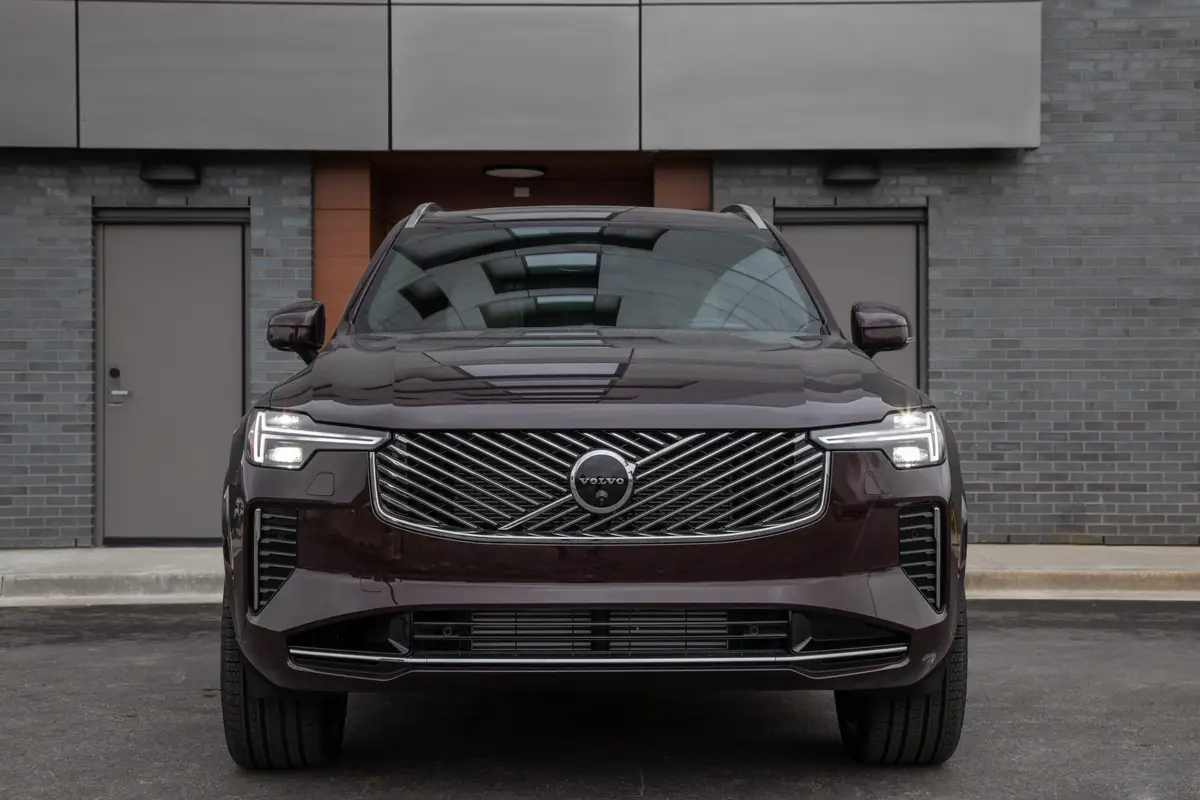2004 Volvo V70: What's New
Vehicle Overview
Volvos midsize V70 wagons went on sale, in mildly revised forms, as early 2004 models. The mirrors have been redesigned to reduce wind noise, new 15-inch alloy wheels are used, and new ZF rack-and-pinion steering is installed. A new instrument panel features watch-bezel gauge surrounds, a color-coordinated steering wheel is new, and the flip-style key has integrated remote control. A new V70 Titanium Edition has Amathea alloy wheels and silver roof rails and moldings.
After launching its all-wheel-drive XC (Cross Country) model in 2001, which features an additional 2 inches of ground clearance, Volvo introduced the all-wheel-drive V70 wagon for the 2002 model year. At the Paris Motor Show in September 2002, the Swedish automaker introduced a high-performance V70 R wagon.
The base engine in the V70 2.4 is a 168-horsepower, 2.4-liter inline-five-cylinder. A 208-hp, turbocharged 2.5-liter inline-five goes into the 2.5T and 2.5T AWD. Stepping up another notch is the high-performance T5 version, which uses a turbocharged 2.3-liter inline-five that packs 247 hp. Volvos Dynamic Stability Traction Control electronic stability system is standard on the T5 and optional on other models.
Exterior
The V70s rounded front corners resemble those on the S80 sedan, but the rear half retains the straight lines and body profile of a traditional wagon. All V70 wagons ride a 108.5-inch wheelbase and measure 185.4 inches long overall. A moonroof is available.
Interior
The V70 seats five people on two front buckets and a three-place 60/40-split rear bench seat. Cargo capacity is 37.5 cubic feet with the backseat raised, and that space increases to 71.5 cubic feet when the seat is folded down. An eight-way power drivers seat and dual-zone electronic climate control are standard on all models but the V70 2.4, which uses a manual system. A CD/cassette audio system is standard.
Under the Hood
Buyers can choose between several inline-five-cylinder engines. The 2.4 wagon uses a 168-hp 2.4-liter that teams with either a five-speed-manual or five-speed-automatic transmission. (In California, this engines output is 165 hp to meet SULEV [Super Ultra Low Emissions Vehicle] standards.) The 2.5 models get a turbocharged 2.5-liter engine that produces 208 hp, and it mates only with the automatic. Sport-minded shoppers may choose the T5 wagon, which is equipped with a 247-hp, high-pressure-turbocharged 2.3-liter engine and a standard five-speed-manual gearbox. Volvos Geartronic automatic transmission, which permits manually selected gear changes, is optional for 2.5T and T5 models.
Safety
Safety features in the V70 include antilock brakes, side-impact airbags, side curtain-type airbags and a Whiplash Protection System that moves the front seats rearward in a collision. Traction control is included on front-wheel-drive models.
V70 R
Volvo unveiled a high-performance V70 R wagon that features Four-C (Continuously Controlled Chassis Concept) technology at the Paris Motor Show in September 2002. Three buttons on the instrument panel select Comfort, Sport or Advance Sport mode, and the settings can be updated 500 times per second. Introduced to the U.S. market at the Greater Los Angeles Auto Show in January 2003, the 2004 V70 R uses a 300-hp engine and either a Geartronic five-speed-automatic or six-speed-manual transmission. Volvo also offers a high-performance S60 R sedan with the same drivetrain.
Driving Impressions
Volvos wagons are thoroughly civilized and tightly constructed and have engine choices to suit various driving needs. Steering is on the heavy side, but its not ponderous. These wagons are stable on the highway and corner well enough, but they cant be called snappy in urban driving.
| Reported by Jim Flammang for cars.com; Posted on 9/26/03 |
Featured stories




